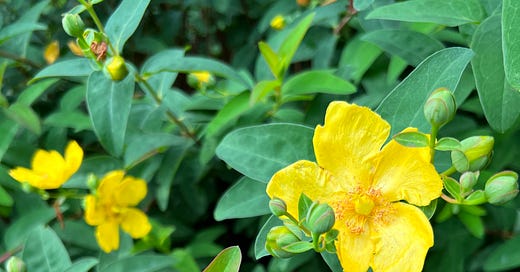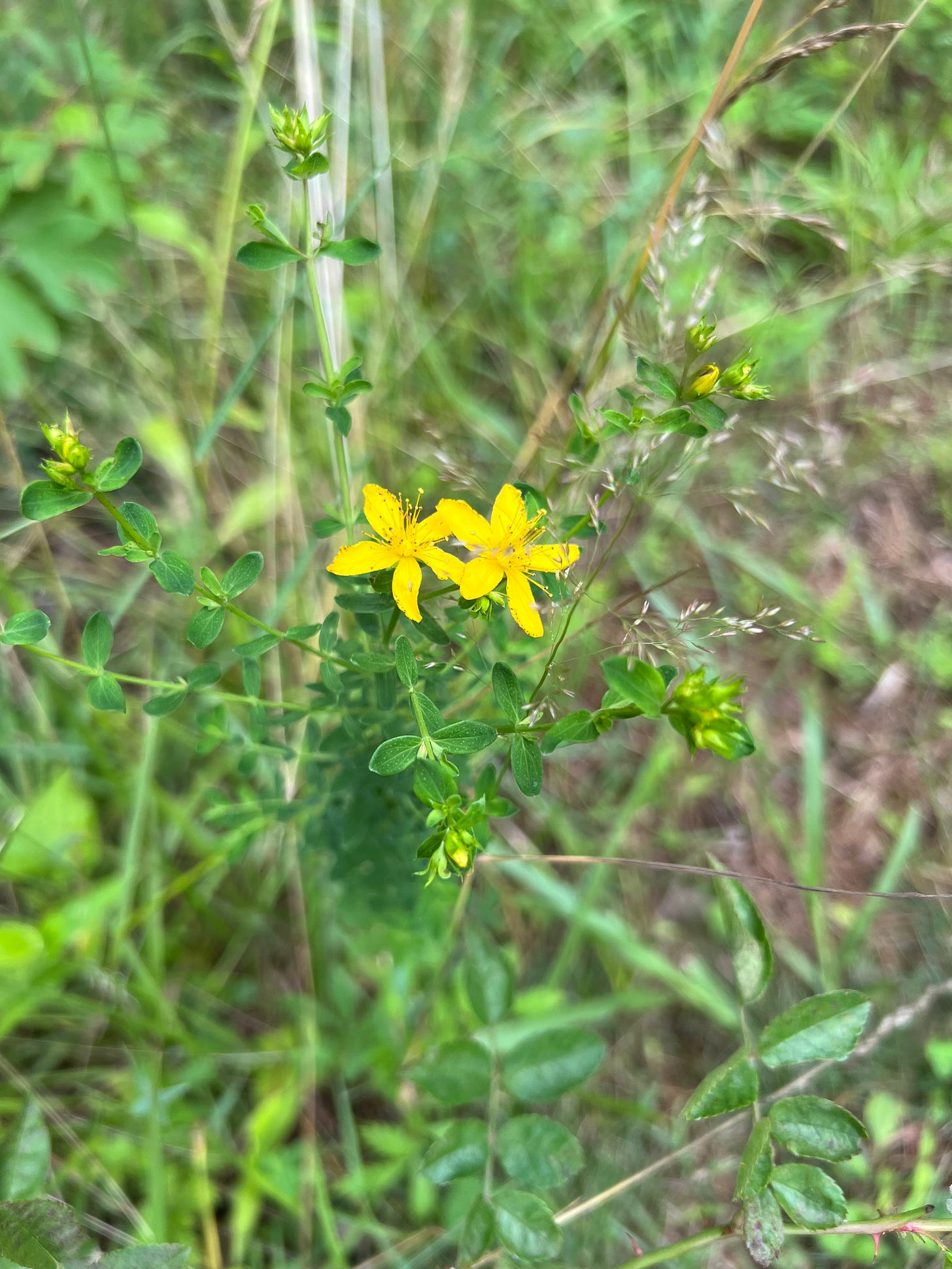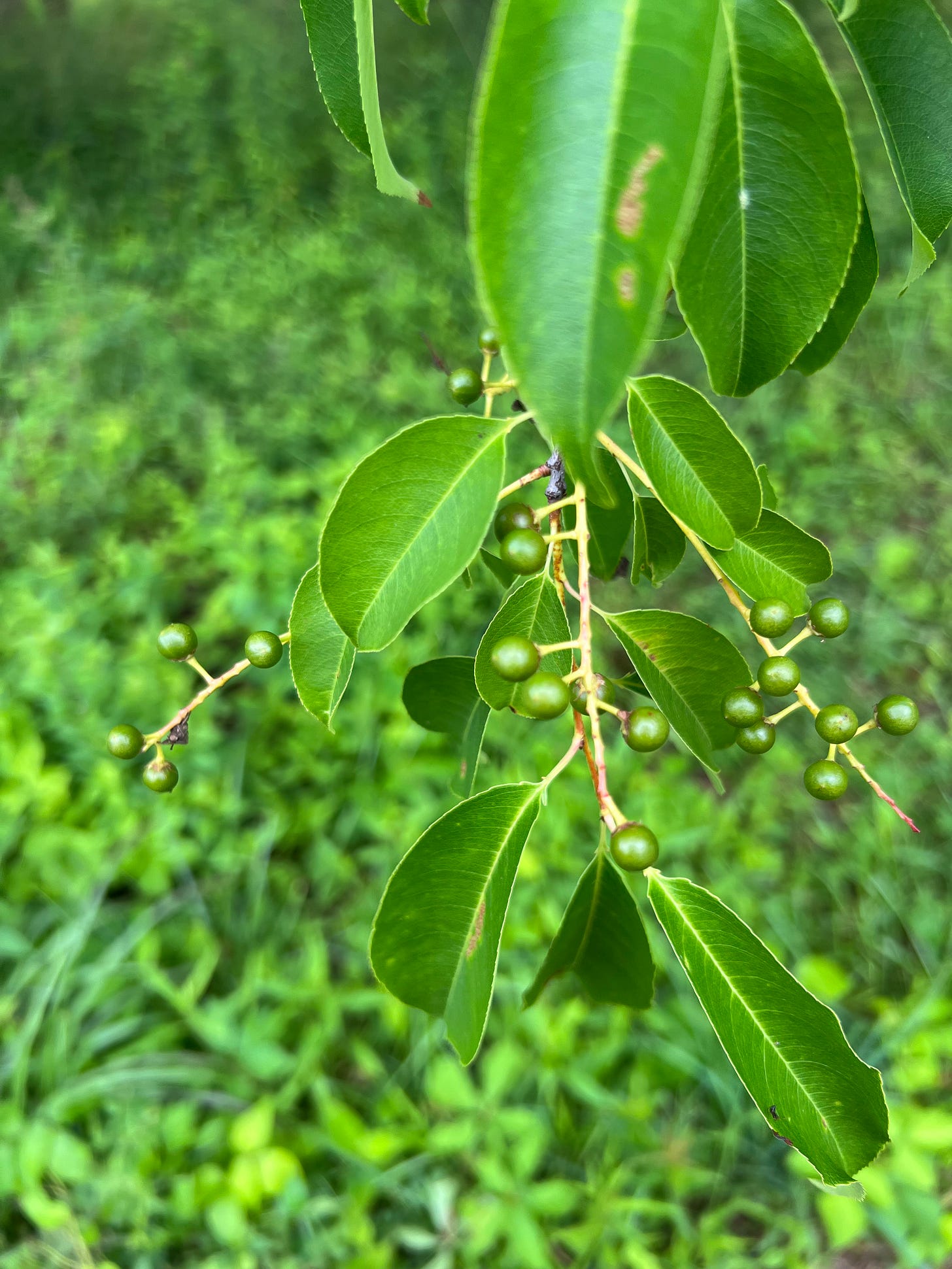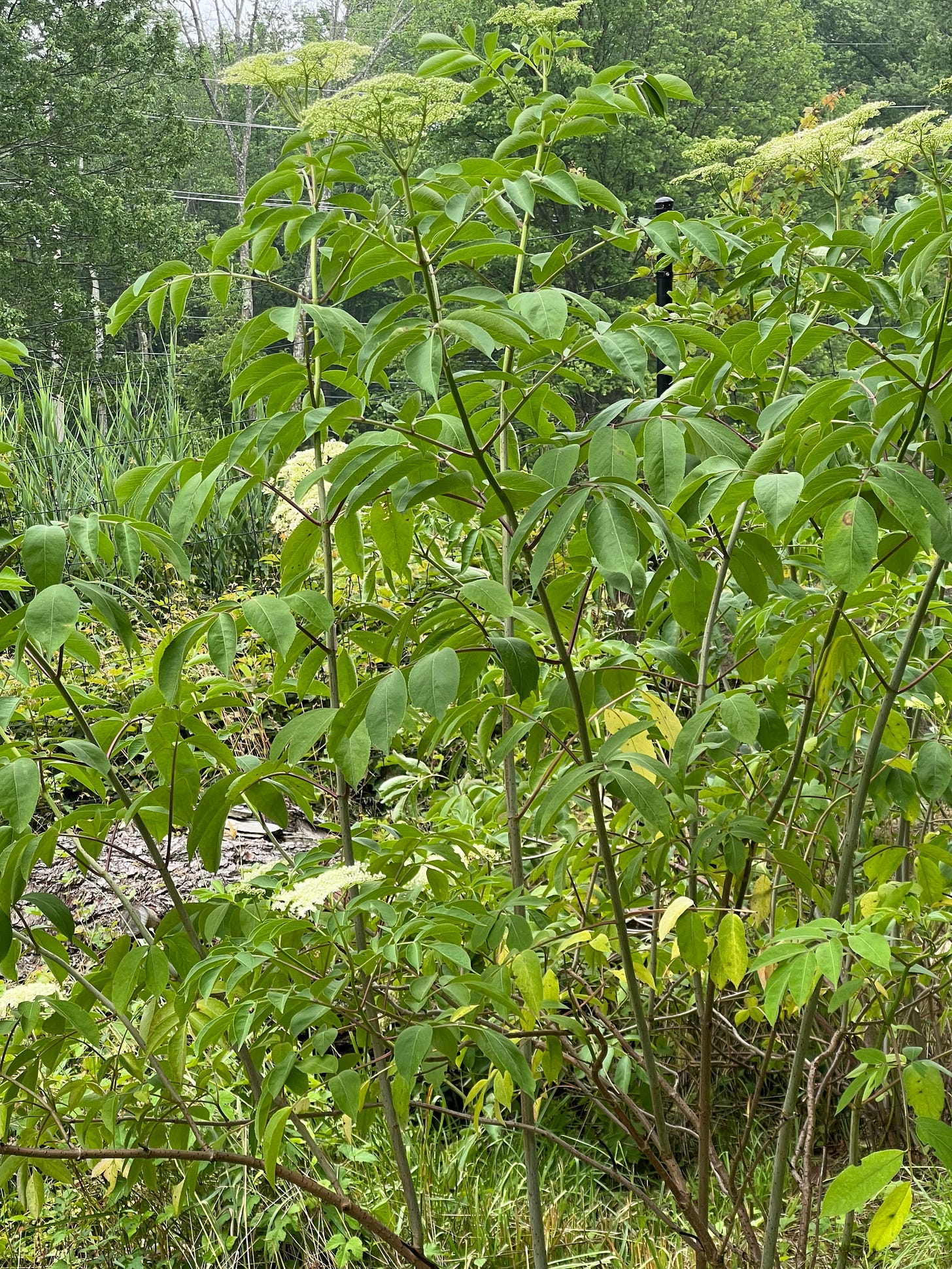Plant Profile: St. John’s Wort
Puddock Hill Journal #41: Three instances of this bright native have started to bloom.
In the symphony of nature, it is now St. John’s Wort’s turn to play. By which, of course, I mean bloom.
The remarkable Hypericum genus contains 500 species with multiple representatives on every continent except Antarctica. The distinctive flowers, almost always yellow, are easily recognized by their five petals and willowy stamen bundles. The plants manifest as herbs, shrubs, and, in tropical areas on two continents, small trees.
At Puddock Hill, we have three varieties of Hypericum, two planted by us and one seeded by nature. They all began blooming this week.
If you ever visit the supplements aisle of your grocery store or pharmacy, you may be familiar with St. John’s Wort extract, which supposedly relieves symptoms of depression. I’ve never taken the product orally, but seeing the plant’s bright flowers does make me cheerful. The extract, it turns out, primarily derives from the native herbaceous species.
My interest in St. John’s Wort goes back to our first place outside the city, a big stucco house in Bedford Hills, NY, that sat in front of an ample gravel driveway circle with a mature sugar maple in its center. Toward a barn and cottage (the latter itself a small converted barn), a swath of lawn spread out directly from the circle. To better define the edge, I planted a hedge of St. John’s Wort, which for years flowered profusely there in full sun.
Before I got religion about native species I had already begun to realize that there was something special about promoting plants that had evolved in a particular region and helped form its character. I must have read somewhere that St. John’s Wort was a native, and what is now patently obvious didn’t occur to me at the time: that plants given the same common name or even sharing the same genus could come from anywhere. In fact, it now seems to me that nearly all native plants we have in North America have cousins on every temperate continent.
Looking back, I suspect that the St. John’s Wort variety I planted in Bedford Hills was Hypericum calycinum, a native to southern Europe and southwestern Asia that often shows up in the nursery trade here. I repeated my mistake years later at Puddock Hill (again, before committing fully to natives) by planting the same variety in the foundation bed by our porch:
There I have an excellent view of it when I sit outside with my laptop in summer months, and I can report that it attracts few insects of any kind. That in itself should be a dead giveaway of its origins.
Four years ago, we planted half a dozen true Eastern native Shrubby St. John’s Wort (Hypericum prolificum) beside an old man-made frog pond on the property. According to Prairie Nursery, this is “an important larval host plant for several species of butterflies and moths, including the Gray Hairstreak butterfly and the Wavy-lined Emerald moth,” and, while I’ve never seen caterpillars on the shrubs, this time of year finds many bee species hard at work among their profuse flowers:
Incidentally, a recent study, reported on by EcoWatch, found that native bees serve as better pollinators of native flowers than do honeybees, which originated in Eurasia and Africa. The study, conducted in California by a pair of UC San Diego professors, found that “for three common native self-compatible plants in Southern California, super-abundant, non-native honeybees (Apis mellifera L.) visit more flowers on an individual before moving to the next plant compared with the suite of native insect visitors. This probably increases the transfer of self-pollen. Offspring produced after honeybee pollination have similar fitness to those resulting from hand self-pollination and both are far less fit than those produced after pollination by native insects or by cross-pollination.”
Specifically, according to EcoWatch (paraphrasing an analysis by New Scientist), “The offspring of plants pollinated by native species had a two to five times higher likelihood of surviving and reproducing than plants that had been pollinated by honeybees.”
Not coincidentally, the third St. John’s Wort at Puddock Hill, Spotted St. John’s Wort (Hypericum punctatum), supports native American bumblebees (Bombus pensylvanicus). I found this one in bloom in part shade by a woodland edge near the big pond:
When I went looking for the same plant a day later for my daily (kinda, sorta) Backyard Stewardship YouTube video, I couldn’t find it again. I hope, wherever it is, it went to seed, because we don’t see enough of it around here. Fortunately, the PA Enflowered website lists its status as secure.
Here’s my YouTube video on our St. John’s Wort:
Fruit forms on a native black cherry (Prunus serotina) off the barn meadow path:
Several of the native elderberry (Sambucus canadensis) we planted two years ago by the big pond dam have really grown into their own:
Native knotsheath sedge (Carex retrorsa) grows along the banks of the big pond:








